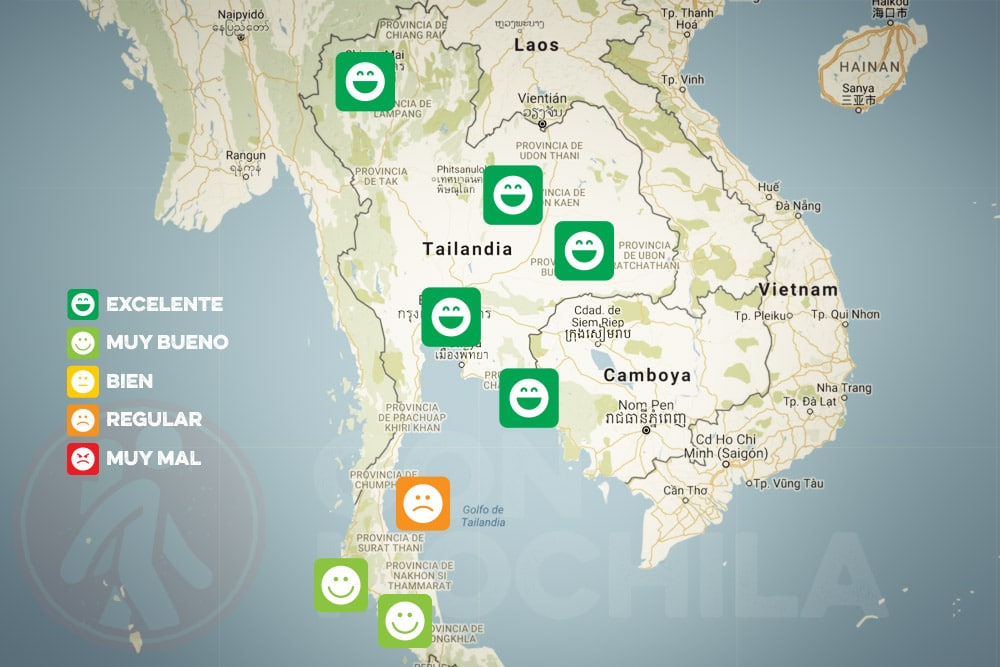Want to know which Thai islands are best to visit depending on when you travel so you don’t get caught in the rain? Do you have time and prefer to choose an island carefully and adjust your vacation dates accordingly? We know that the monsoon season can be a bit confusing, and you don’t want to get caught in a storm in the middle of paradise, so we’ll try to clear up your doubts with this article about islands, monsoons, rains, and Thailand.
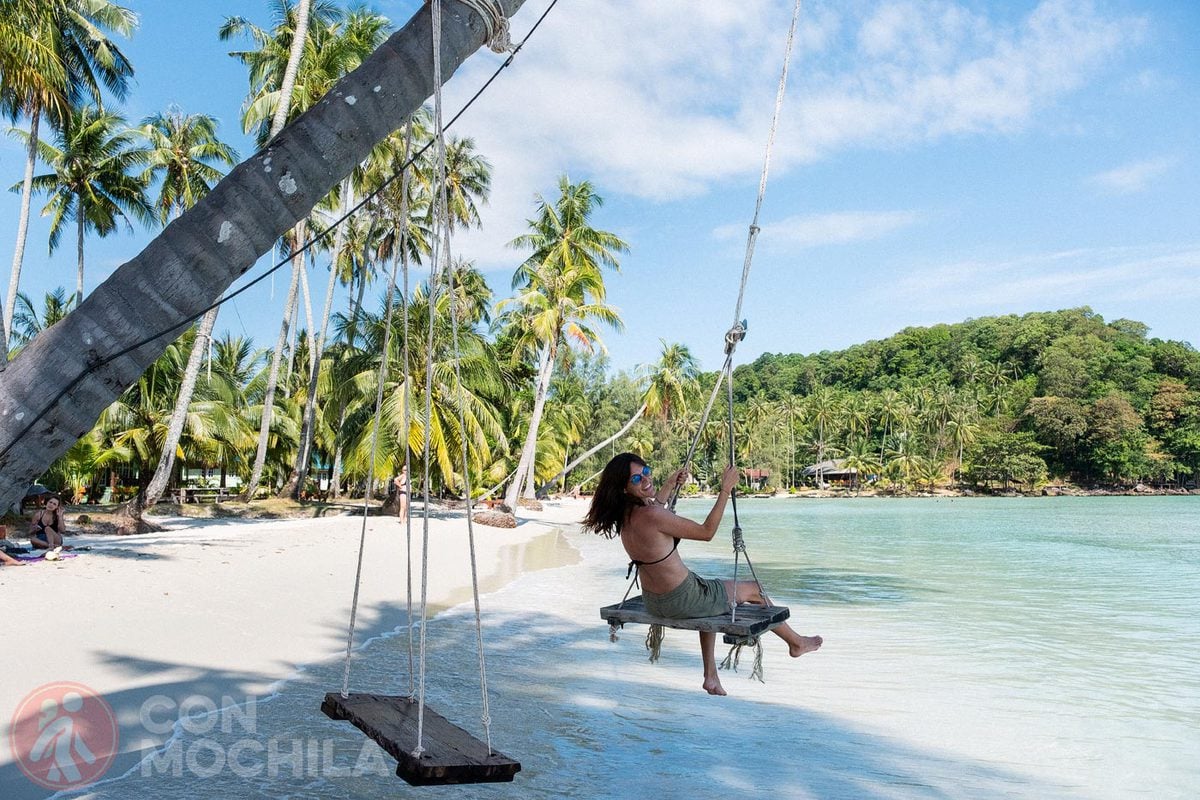
If you just want to know when is the best time to visit Thailand’s islands in general, because you plan to visit several, or you’re not sure where you want to go and the date doesn’t matter, the quick answer is: January to March.
Do you only have a specific time to travel to Thailand because it’s your designated vacation month and you have no other option? Not sure which islands or beaches to choose?
To make things easier, we’ve structured this article into two parts:
First, we divide Thailand into four main island and beach regions and explain the best time to visit each one.
Then, we flip the perspective and summarize Thailand’s weather by season, so you can pick the ideal destination depending on when you’re planning your trip.
Should you take Thailand’s weather into account when visiting beaches? Many travelers ask this question. While we always say that the monsoon season isn’t a deal-breaker when visiting Southeast Asia in general, it’s true that beach destinations are more affected by weather conditions.
If we’re in Chiang Mai and get caught in a shower or two, it’s no big deal—the rain is usually brief, and once it passes, we can continue with our plans: visit that temple, check out a market, try a new restaurant…
But no one wants to be on the beach when it’s raining. Even if the rain stops for a while, strong currents, washed-out sand, and cloudy skies can really change the experience. Let’s be honest—those turquoise waters just don’t look the same under gray clouds.
Now, there are transitional periods in some areas, where a quick downpour may be followed by a beautiful sunny afternoon, enjoying the sea and bars—like in Koh Samui, Koh Phangan, and Koh Tao from May to September.
But be aware that on other islands, transportation can be unreliable during monsoon season. In some cases, boats stop running, and many accommodations close. This is true, for example, of Koh Lipe (and trust us, you don’t want to board one of those speedboats during rough monsoon seas…).
To better explain each area, we’ve divided Thailand into four coastal zones, each with distinct monsoon patterns.
The best time to visit: Mid-November to late February, when the weather is sunny, dry, and pleasant. From February to May, it’s very hot, but still dry. And between June and October, expect clouds and intermittent rain.
Looking at the map of Thailand’s west coast, you’ll notice it’s dotted with islands of all sizes. We’ll mention only the most popular ones with accommodation options—others, like Koh Mook or Maya Bay, are usually visited on day trips and may only have a single resort or none at all.
From north to south:
Koh Chang and Koh Phayam. Located near the Burmese border, these are low-key, uncrowded islands. Once known only to the most adventurous backpackers due to limited infrastructure, they’ve become more accessible with the arrival of electricity and internet.
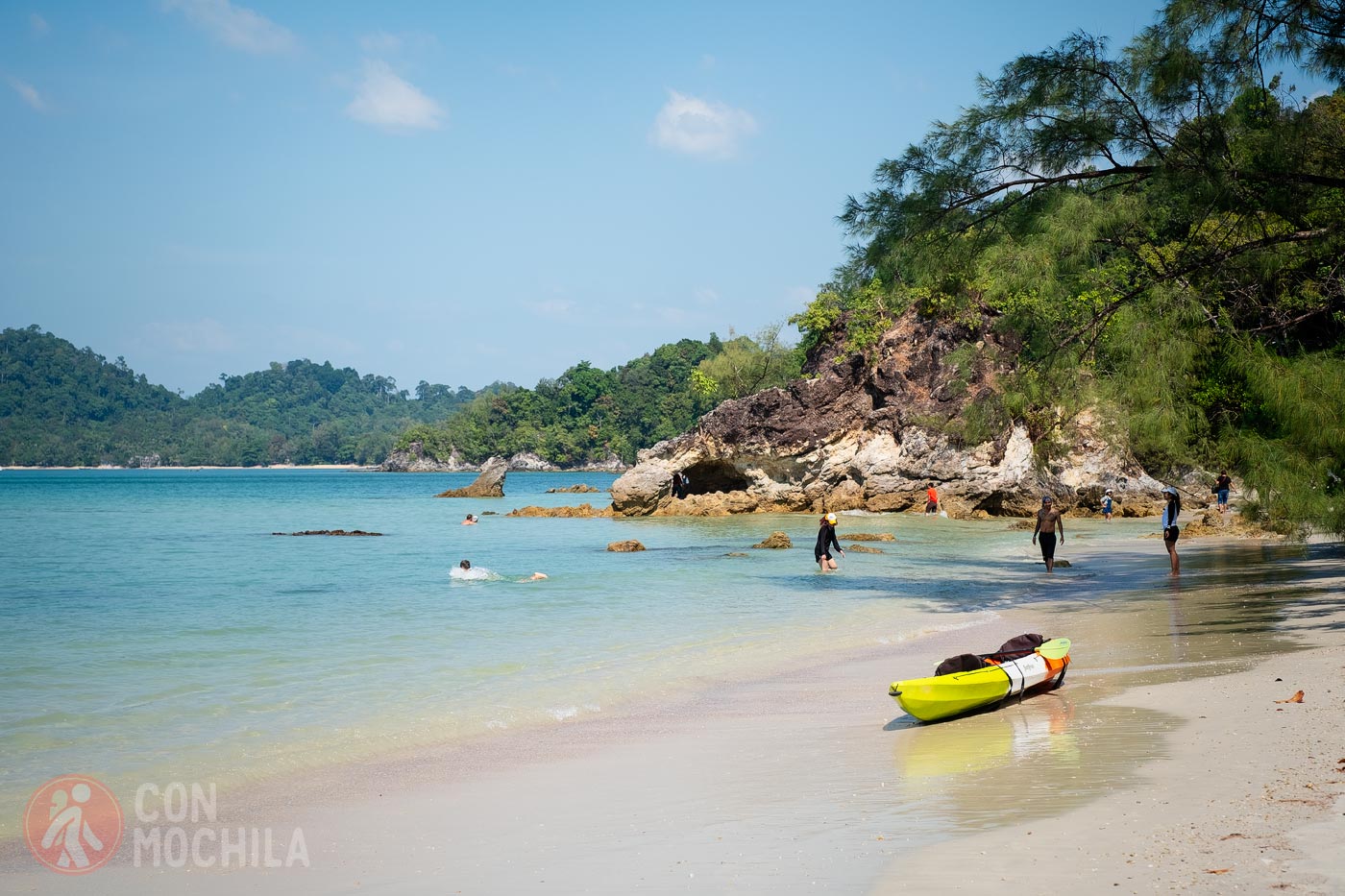
Today, you’ll find basic bungalows, and while they don’t offer Thailand’s best beaches, the chilled, hippie atmosphere makes them a worthwhile escape. Just to give you an idea: Koh Phayam can be explored by motorbike in about 10–15 minutes.
Phuket. Arguably Thailand’s most famous island, Phuket is heavily developed and highly touristic. If there were an antonym for “backpacker,” this might be it. Still, if you’re up for digging deeper, hidden gems await.
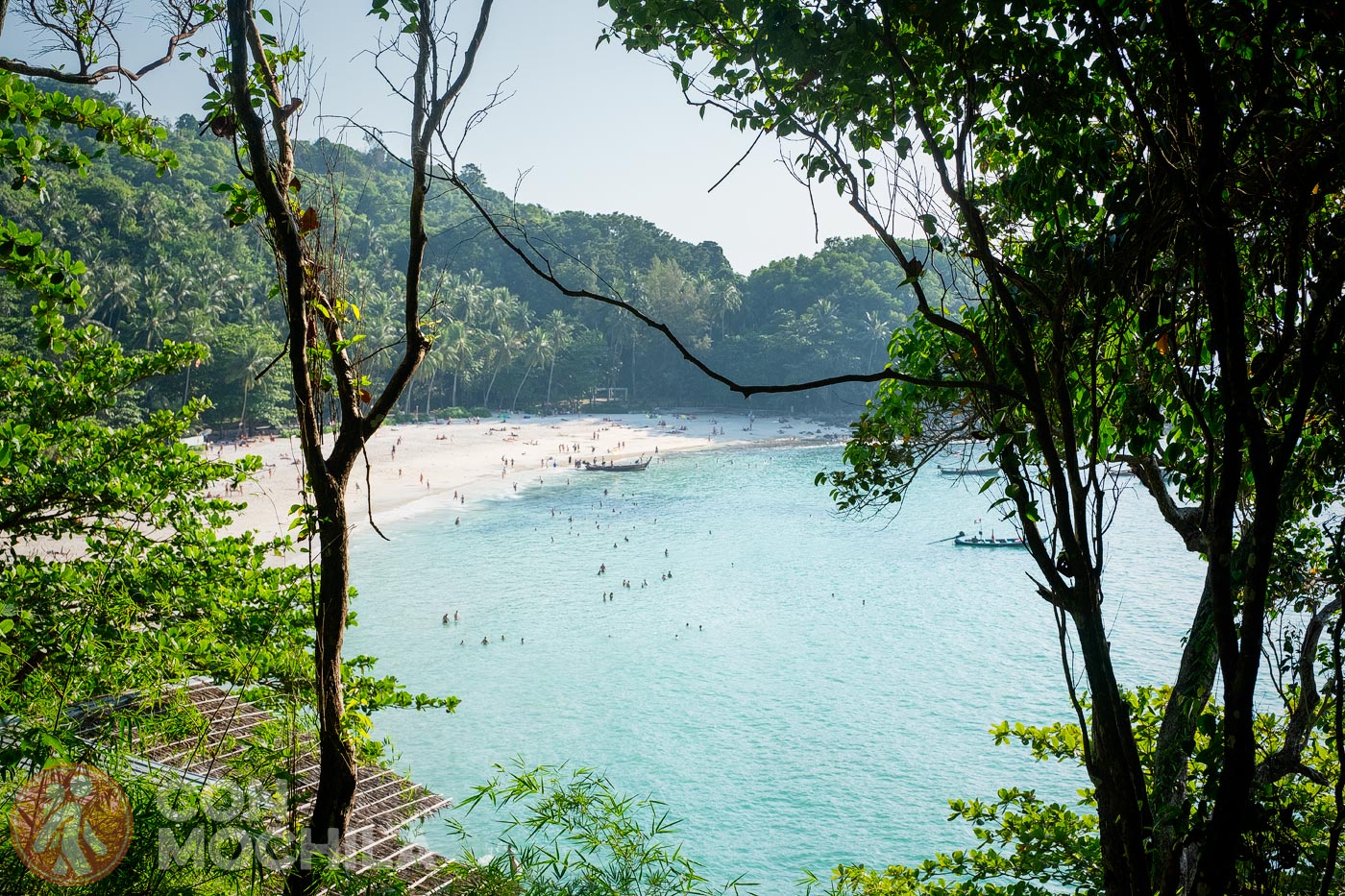
It’s popular for a reason: its beaches—some long and wide, others tiny and secluded—are undeniably beautiful. If you’re looking for peace and solitude, Phuket may not be your best bet. But if you’re seeking beach life and nightlife, this is the place for you.
Koh Yao Yai. This is a nearly untouched island with lush vegetation and pristine beaches. Don’t come looking for parties or crowds—there aren’t even any vendors or beach clubs. It’s the ideal place to unplug and relax.
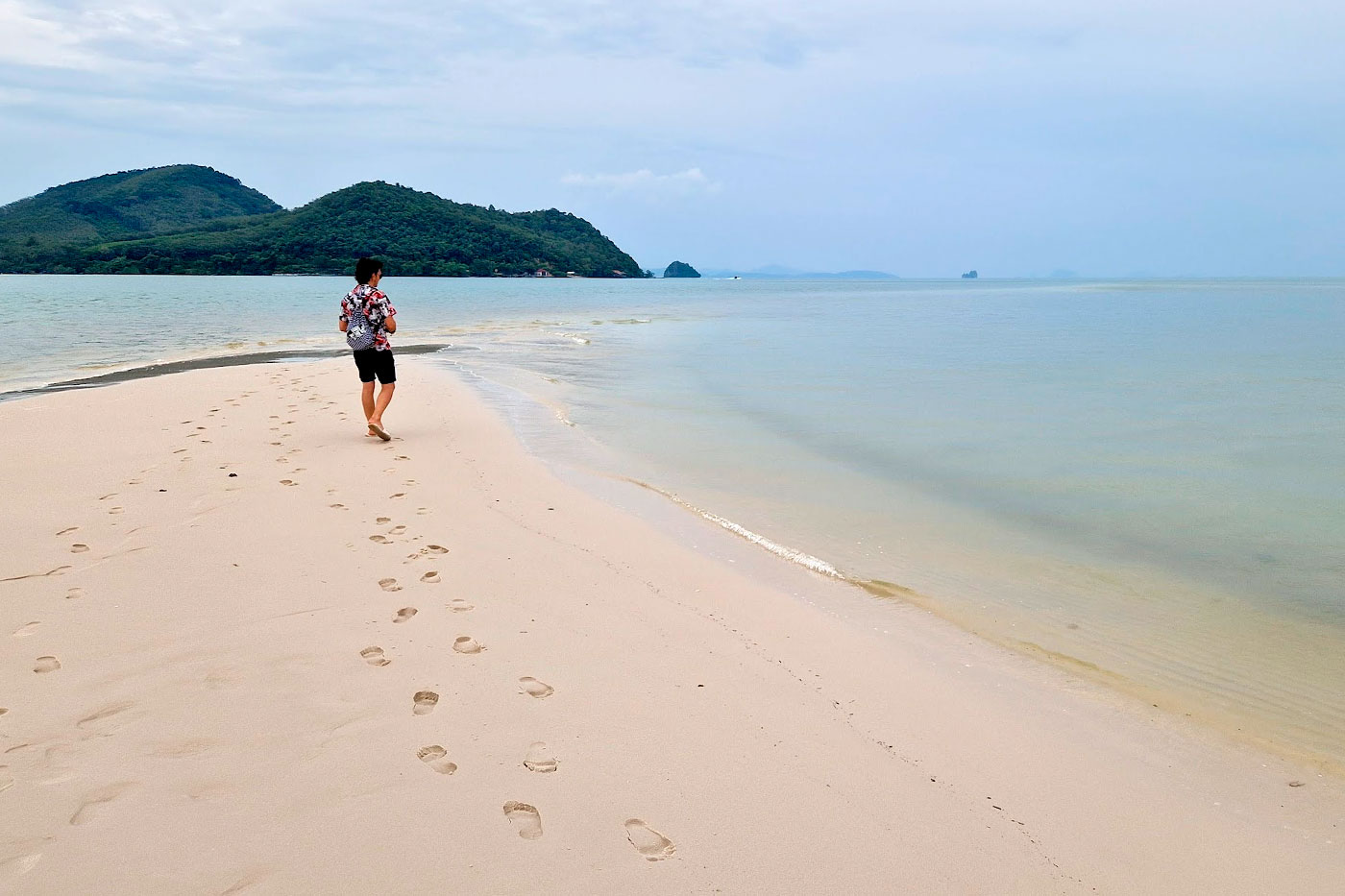
It’s surprising that such a place still exists, especially given the incredible beauty of its coastline. But it does—and it’s magical.
Koh Phi Phi. This small archipelago is one of Thailand’s most visited destinations, thanks in large part to Maya Bay, the country’s most famous beach. The islands are spectacular, but also crowded.
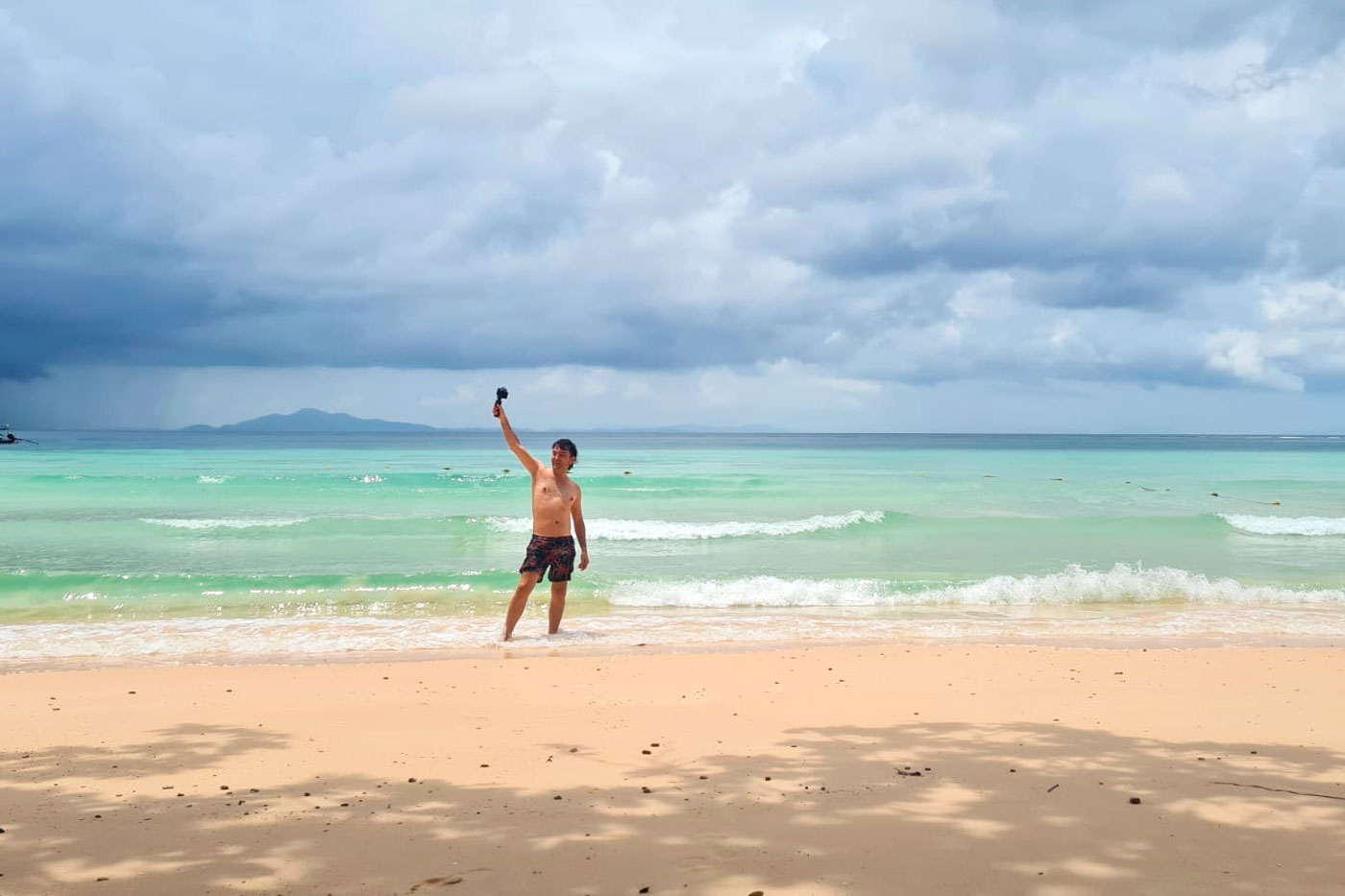
Does this mean the Phi Phi Islands aren’t worth visiting? On the contrary — their waters are home to some of Thailand’s most stunning coves. However, if you want to explore the Andaman Sea and enjoy it in all its splendor, it’s best to understand the ins and outs of the area. Knowing your way around can save you from disappointment.
Railay (and Tonsai). Although technically a peninsula, Railay — connected to Tonsai Beach in Krabi — is such a classic destination that we’ve included it here. Its beaches are absolutely worth the detour.
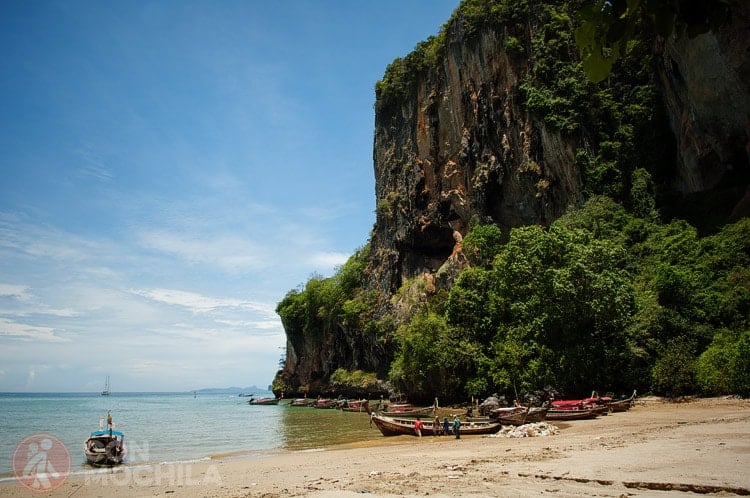
But more than anything, this area is known for its rock climbing scene. Climbers have been coming here for years in search of the perfect blend of adventure and tranquility. If climbing is your thing, this is a must-visit spot in Thailand.
Koh Lanta. Part of Krabi Province, Koh Lanta is an ideal destination if you want a relaxing break in your trip without feeling bored. Fortunately, it’s far less famous than nearby Koh Phi Phi, which makes it much more peaceful. Its lower tourist traffic helps maintain its charm and personality.
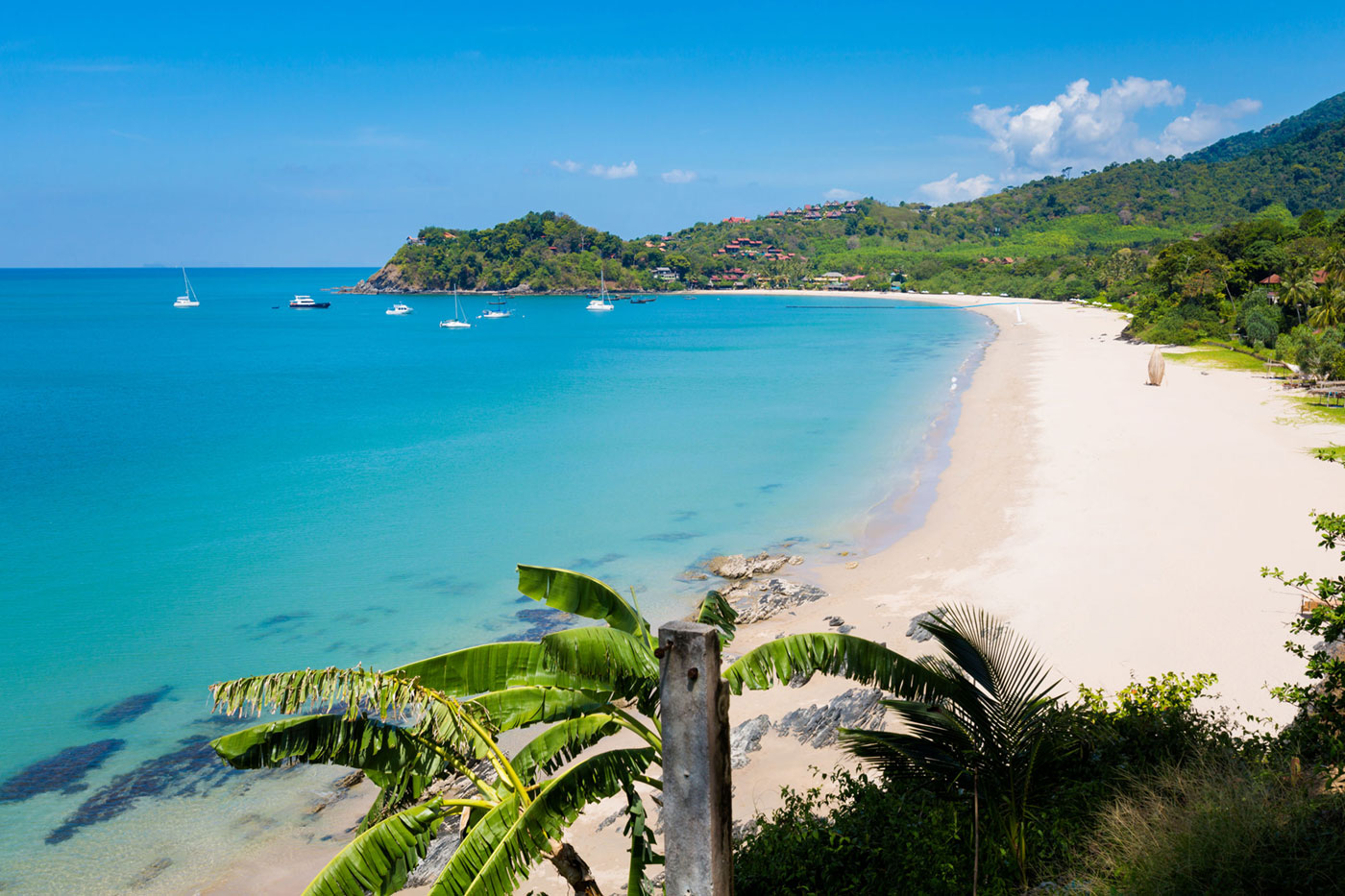
It’s a good choice if you’re looking for more than just beach time. On Koh Lanta, you can take excursions to nearby islands, explore caves, or visit the Mu Koh Lanta National Park.
Koh Lipe. Koh Lipe is so small you can walk from one end to the other in just minutes. Although it’s close to Malaysian waters, that doesn’t stop it from being crowded during high season.
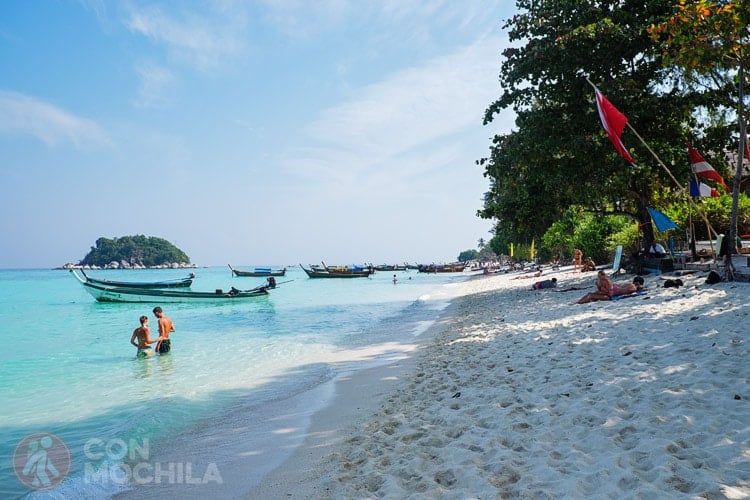
The island offers several features that make it a dream destination: three large beaches with powdery white sand, turquoise waters, and vibrant coral reefs where you can easily spot marine life with just a snorkel and mask.
Now we move to the east coast, diving into the Gulf of Thailand, where you’ll find the well-known trio: Koh Tao, Koh Phangan, and Koh Samui. These islands are usually the best option when the west coast is affected by the monsoon.
If you look closely at weather maps from April to September (which we’ll talk about later), you’ll see lots of orange and red icons on the west coast, but the Gulf islands often enjoy better weather during this period.
The best time to visit all three is from February to April, but as we often say, May to September is still a good time too. So for everyone who messages us saying you can only travel in August, want to visit Thailand, and aren’t sure because of the rain—our advice is always the same: don’t hesitate. Thailand is worth it, and these islands are great beach options.
Koh Phangan. Don’t let the Full Moon Party fame fool you — Koh Phangan has more to offer than just nightlife and exotic beaches. There are quiet areas too, some even suitable for families with small children.
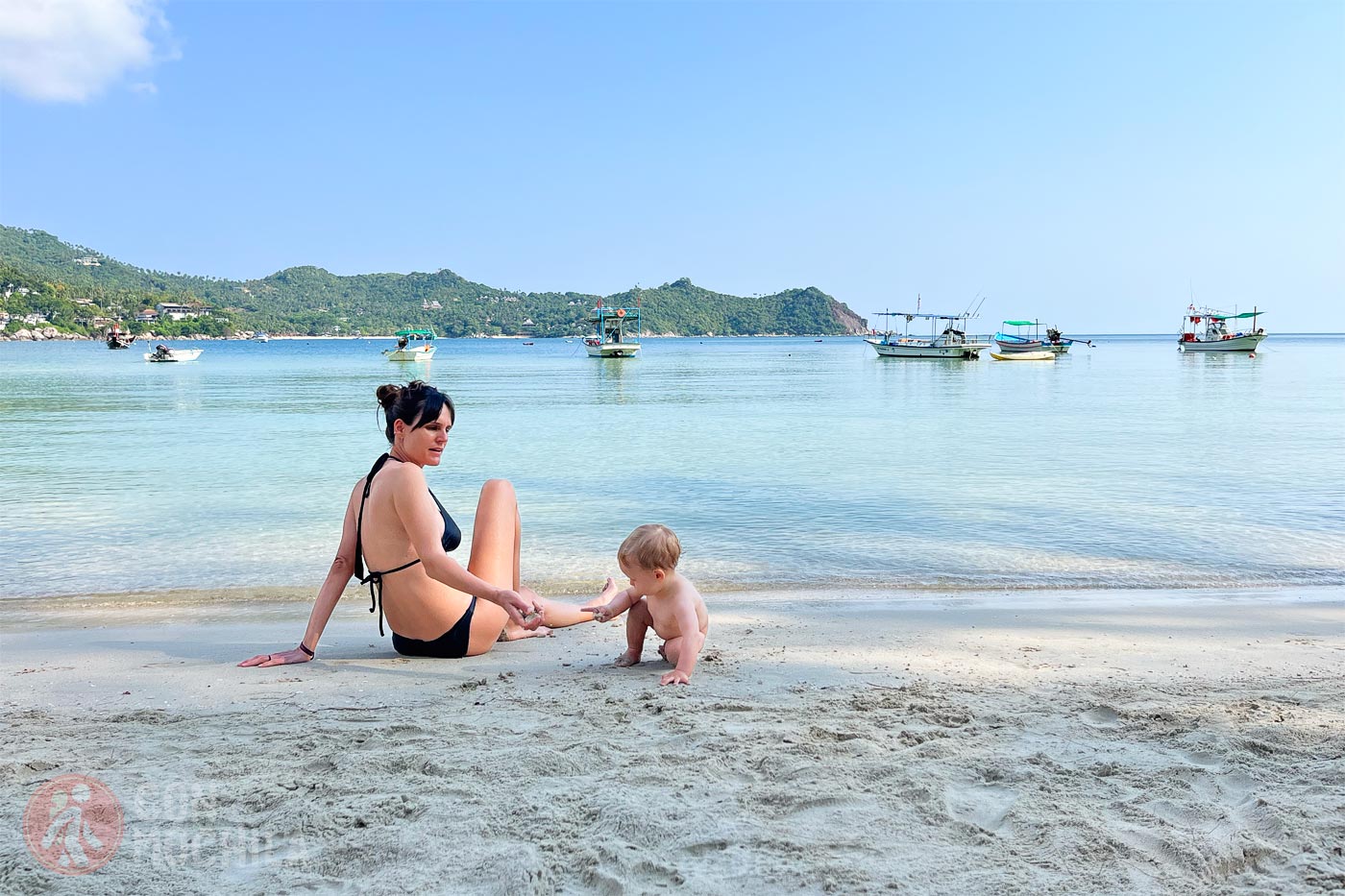
You’ll find everything from peaceful, secluded beaches perfect for disconnecting, to livelier spots where you can dive into fun activities or have the party of a lifetime.
But what all of Koh Phangan’s beaches have in common is their breathtaking beauty, the kind that stays with you long after your trip is over.
Koh Tao. The smallest of the three, Koh Tao boasts lush beaches and an underwater world ideal for learning to dive. It’s known for shallow, close-to-shore reefs, and farther out, you might even spot whale sharks.
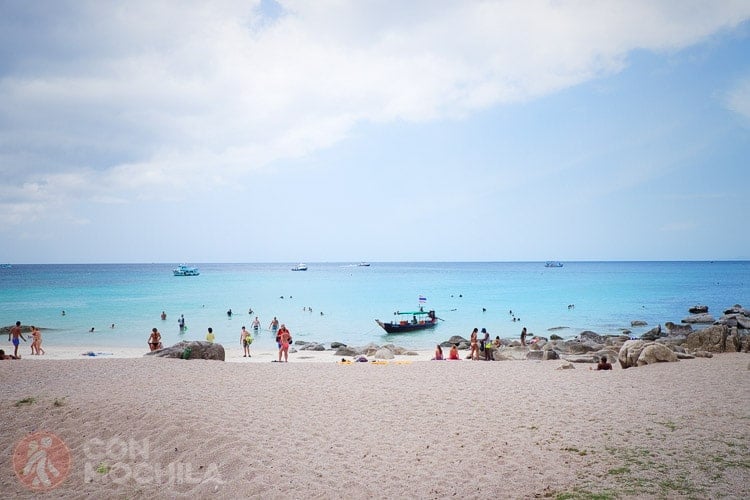
The island is full of dive schools, many offering affordable courses, even in Spanish — helpful if you’re nervous about studying in English. The vibe is a mix of party culture and backpacker chill, depending on the area you choose to stay in.
Koh Samui. Another of Thailand’s larger islands, Koh Samui offers practically every type of accommodation. It’s like the Phuket of the east coast — perfect if you want to stay in a hotel, not travel far, or if you’re coming with family or kids.
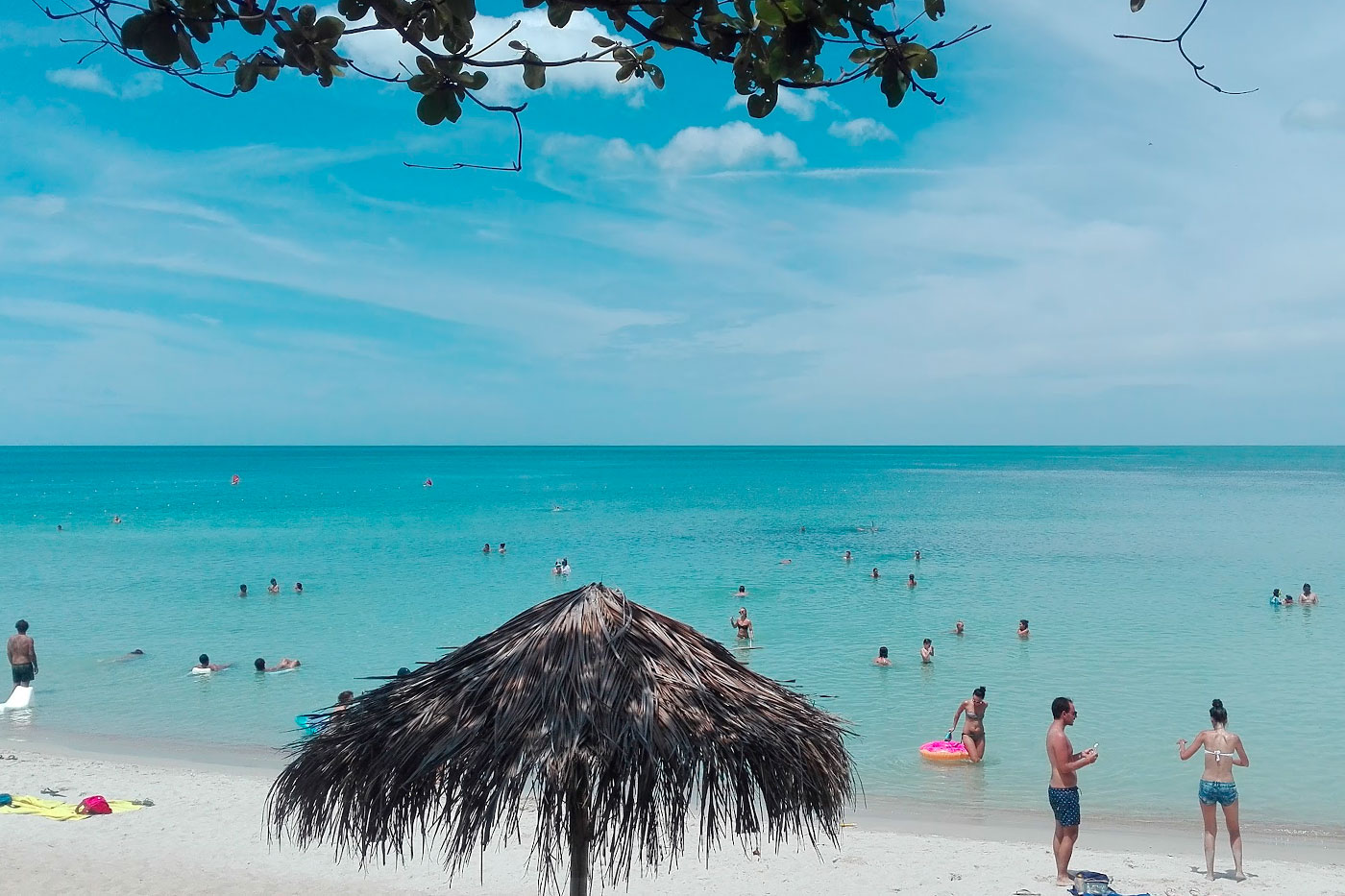
The island’s biggest advantage? It has an airport, with direct flights from Bangkok, making it ideal for travelers with limited time.
These islands are located close to Bangkok, making them very popular with locals and Chinese tourists. The vibe is quite different from that of the more remote islands, where laid-back beach bars and hostels are easier to find. Still, these two are worth considering for a quick island getaway, especially if you’re short on time.
The best time to visit is between November and February, when the weather is milder and there’s little to no rain. From March to the end of May, skies remain sunny, but the heat can be intense.
From June to October it’s the rainy season — skies can be overcast, but it’s often still sunny half the time, and there are fewer tourists, meaning lower prices.
Koh Samet. Relatively small and easy to explore by motorbike in just a couple of hours, Koh Samet is often very busy due to its proximity to Bangkok. It’s a popular escape for city dwellers, and some of its beaches are constantly visited by tour boats. It’s not a cheap destination either, but it’s a great option if you’re pressed for time and want to experience island life.
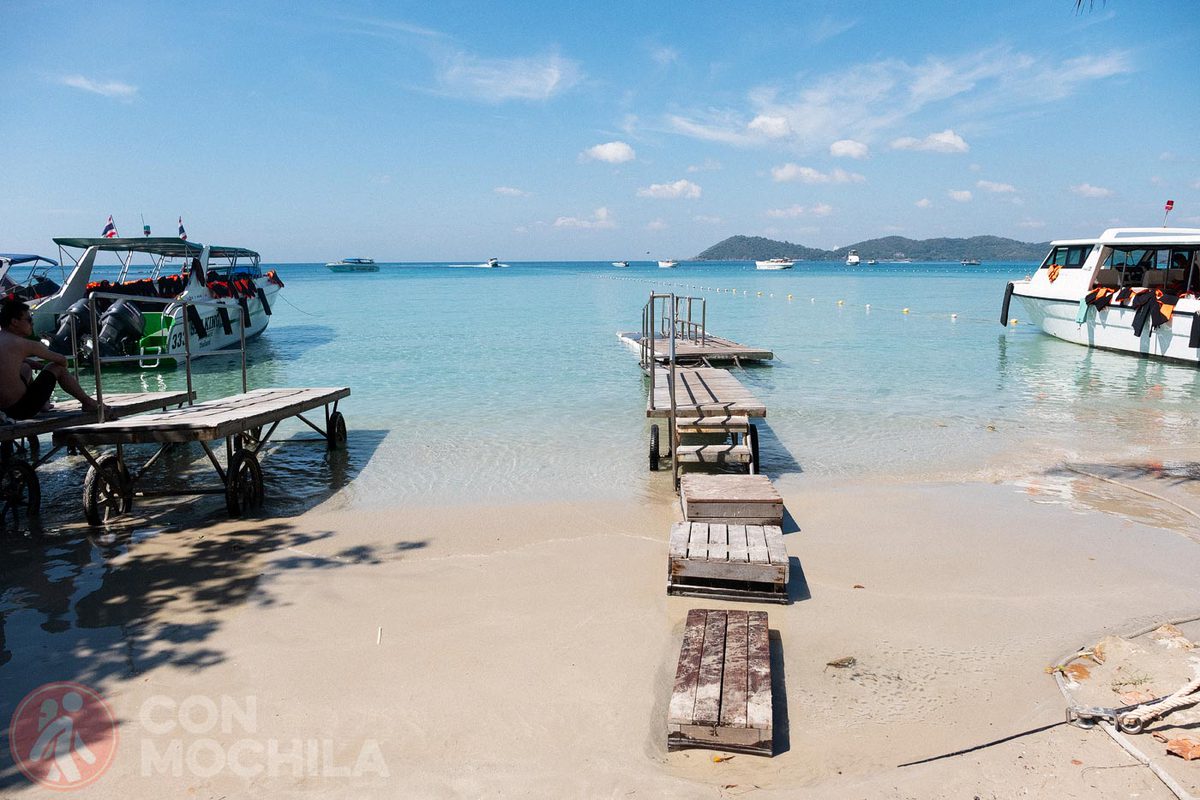
Koh Larn. If you move away from the main cove — which can feel like a theme park during peak season — you’ll find charming cafés with ocean views, eco-friendly small hotels, quiet beaches, and authentic local corners worth exploring.
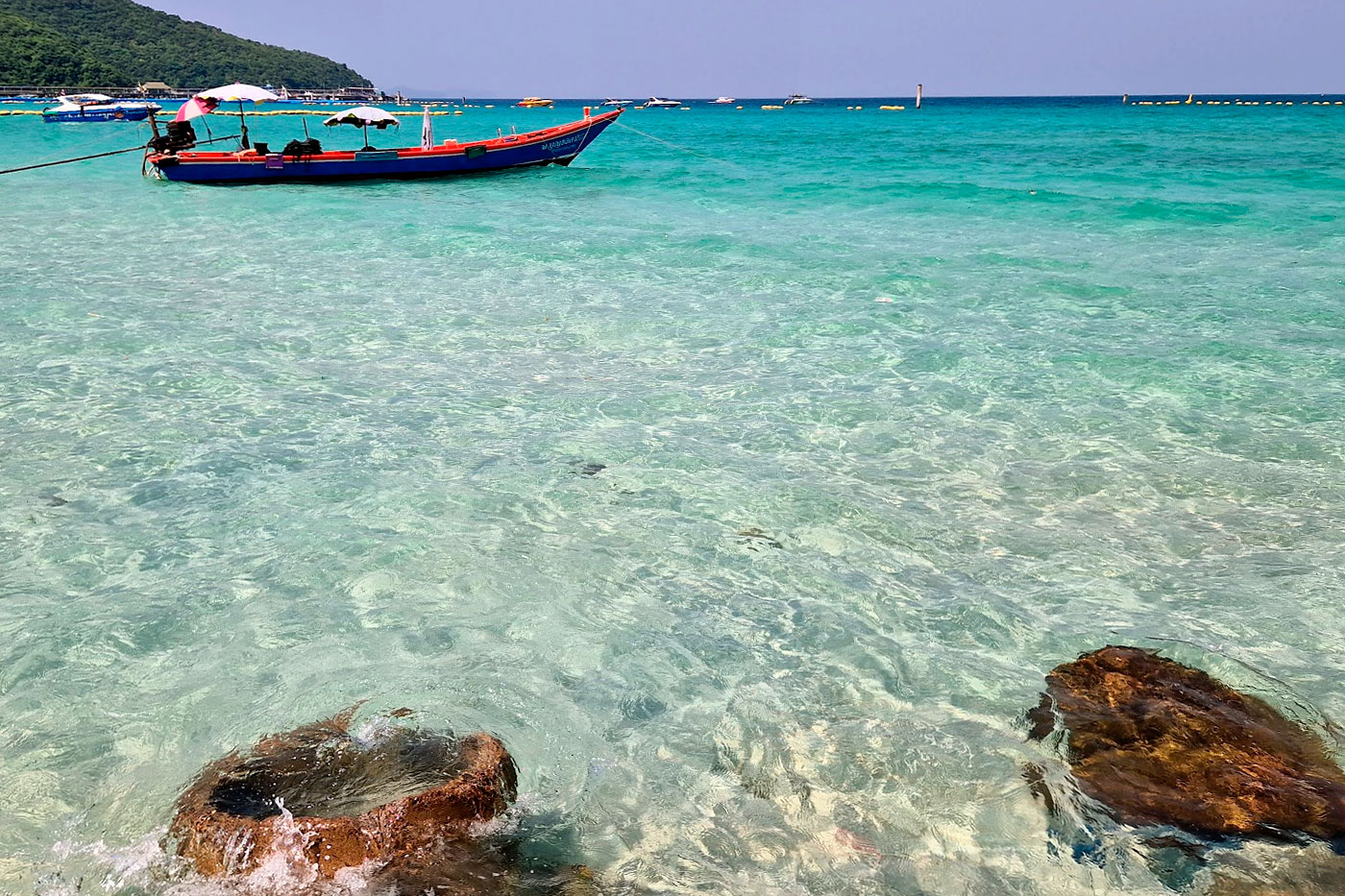
Close to the Cambodian border are two lesser-known but highly recommended islands: Koh Chang and Koh Kood. They’re perfect for travelers short on time or visiting Thailand between November and April.
The peak dry season runs from November to February, with pleasant temperatures around 30°C and minimal rainfall — the best time to go.
March and April are the hottest months, which might be uncomfortable for those sensitive to heat. Rain is still rare, so you can enjoy the beaches and sunshine.
Koh Chang. Thailand’s second-largest island, Koh Chang is relatively close to Bangkok. Its beaches may not have ultra-white sand, but they are still beautiful and remarkably clean.
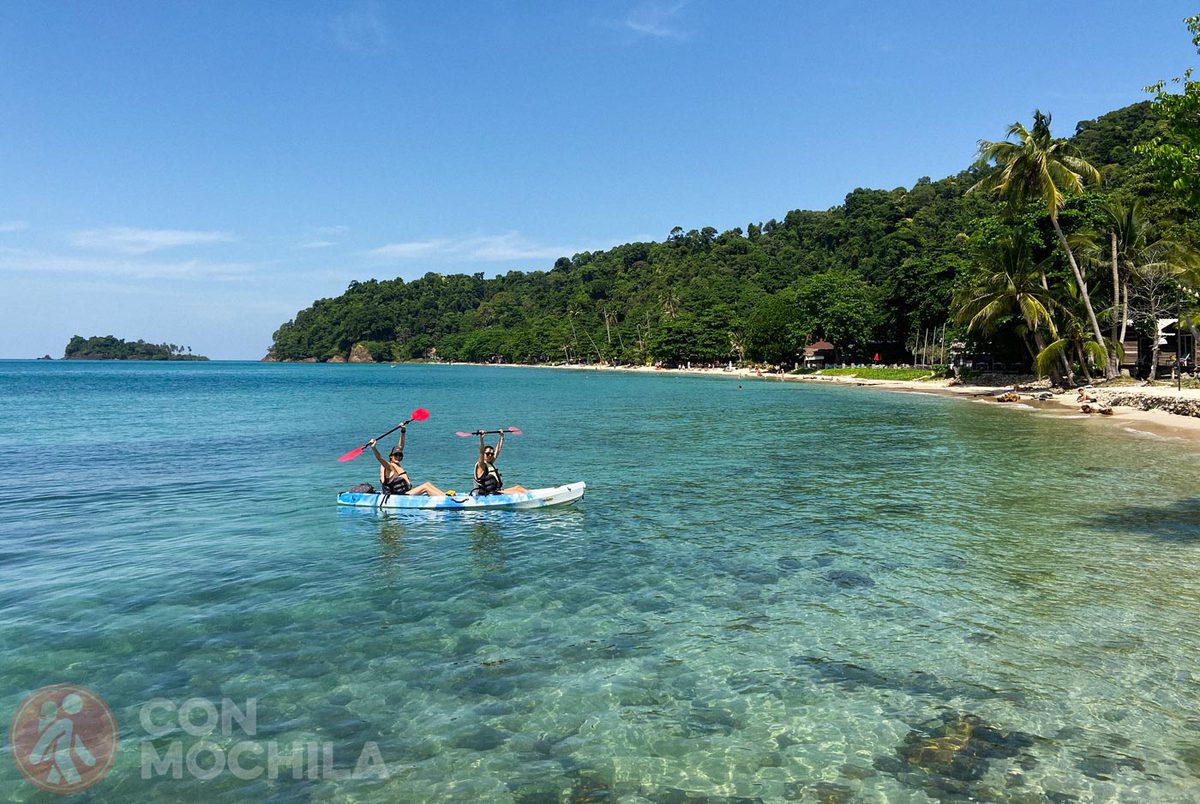
All beaches feature plenty of natural shade from coconut palms and other trees, and are accessible by road, whether by pickup truck or motorbike. From Koh Chang, you can also take snorkeling tours to visit vibrant coral reefs, including some with striking blue coral.
Koh Kood. There’s not much to do on Koh Kood if you’re not a fan of the ocean. Its main draws are beautiful, uncrowded beaches, a few waterfalls, and some ancient trees scattered around the island.
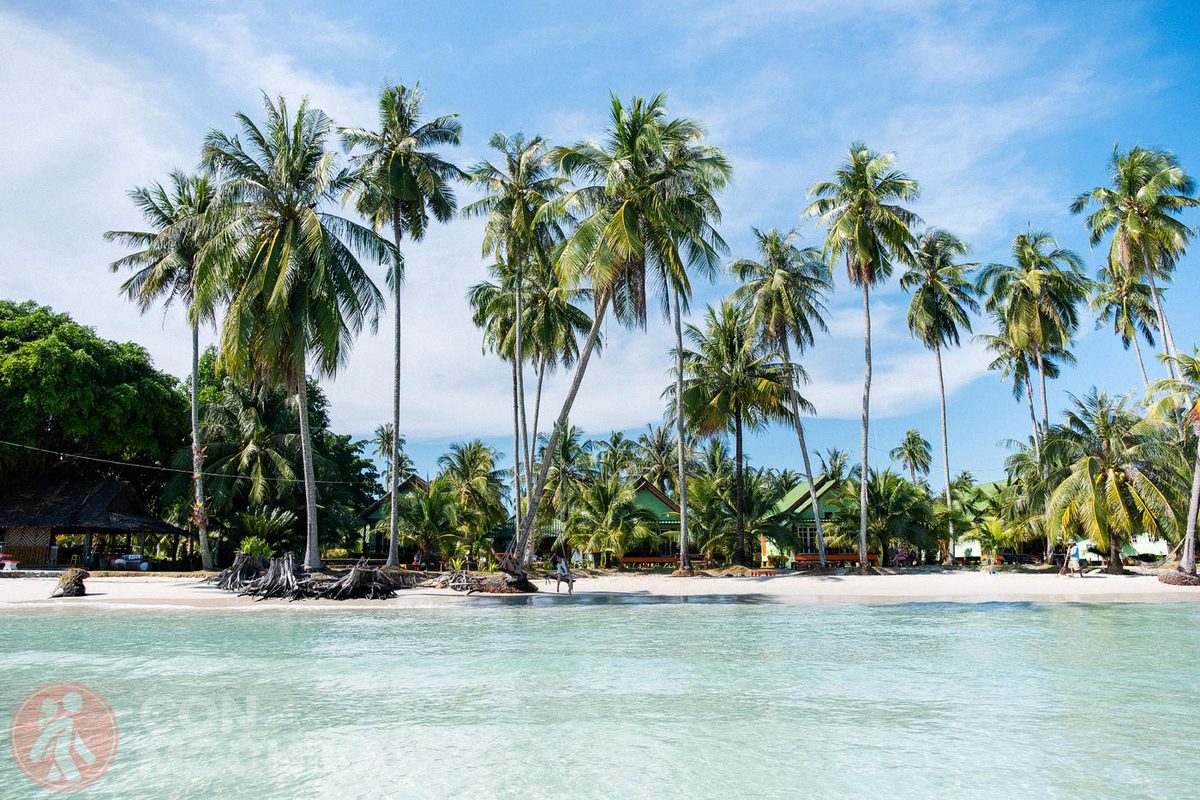
This isn’t the island for party-seekers or those looking for action. It has few restaurants and even fewer bars, but that’s precisely what makes it one of the best islands in Thailand for those in search of natural beauty and tranquility.
Koh Mak. This might be Thailand’s quietest beach destination when it comes to balancing beautiful waters and a minimal tourist infrastructure.
There’s not much to do on Koh Mak besides lounging on the beach and enjoying the sea. There are no bars or supermarkets, and choosing the right hotel matters, as getting around can be tricky.
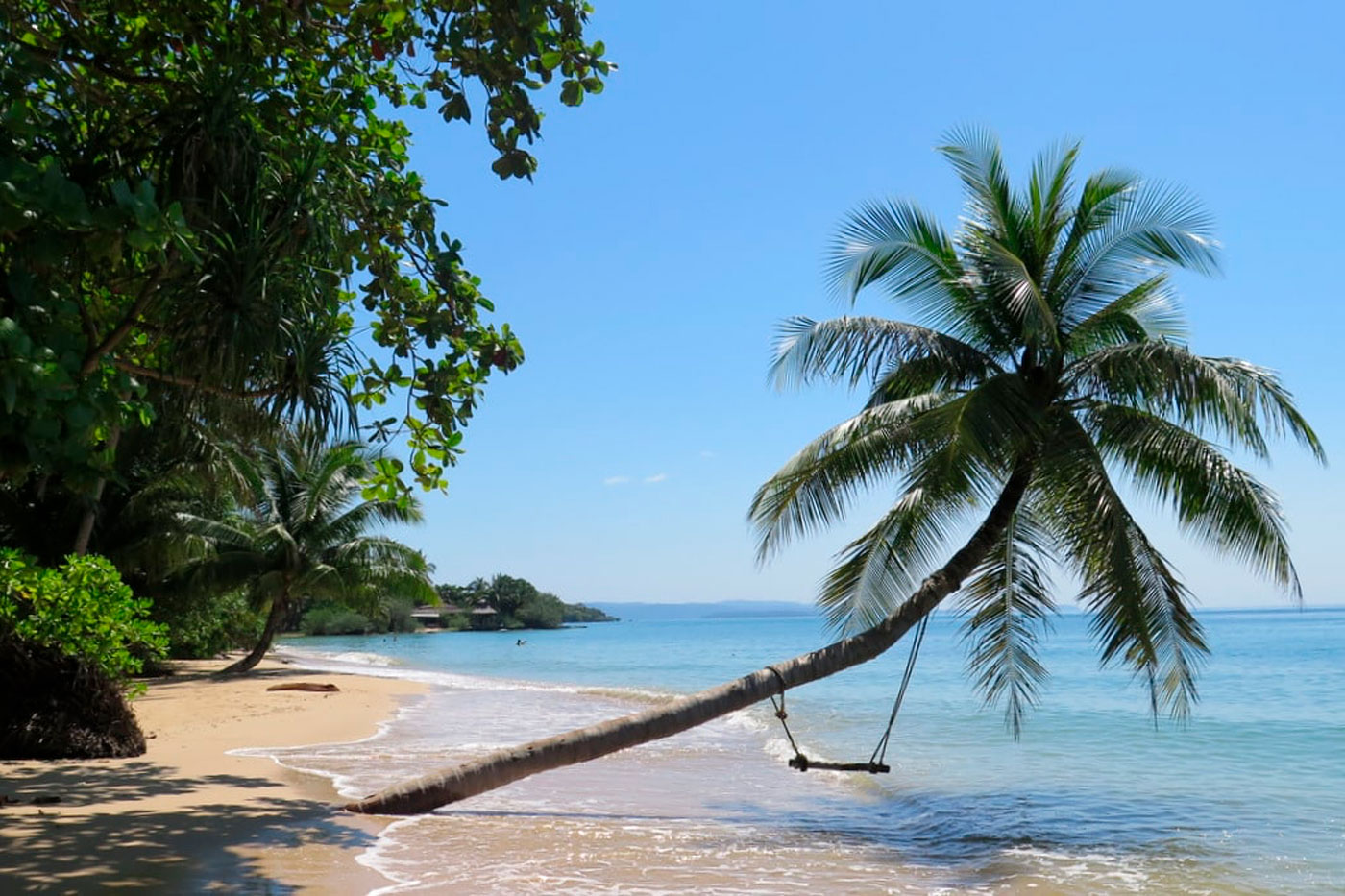
Until recently, motorbike rentals weren’t even available, so staying at the wrong hotel meant you were essentially stranded. Things have improved a bit, but the roads remain rough and limited.
That said, the beaches are stunning, among the best in Thailand. If you’re traveling as a couple and looking for peace and solitude, this island is a fantastic option.
We also have a full article breaking down Thailand’s weather month by month, but here’s a quick summary to give you the key takeaways.
No doubt, these are the best months to visit Thailand, whether or not you’re headed for the islands. There’s almost no rain, and the heat is manageable. In the north, evenings can get cool, and you might need long sleeves. All islands enjoy great weather, so you can take your pick.
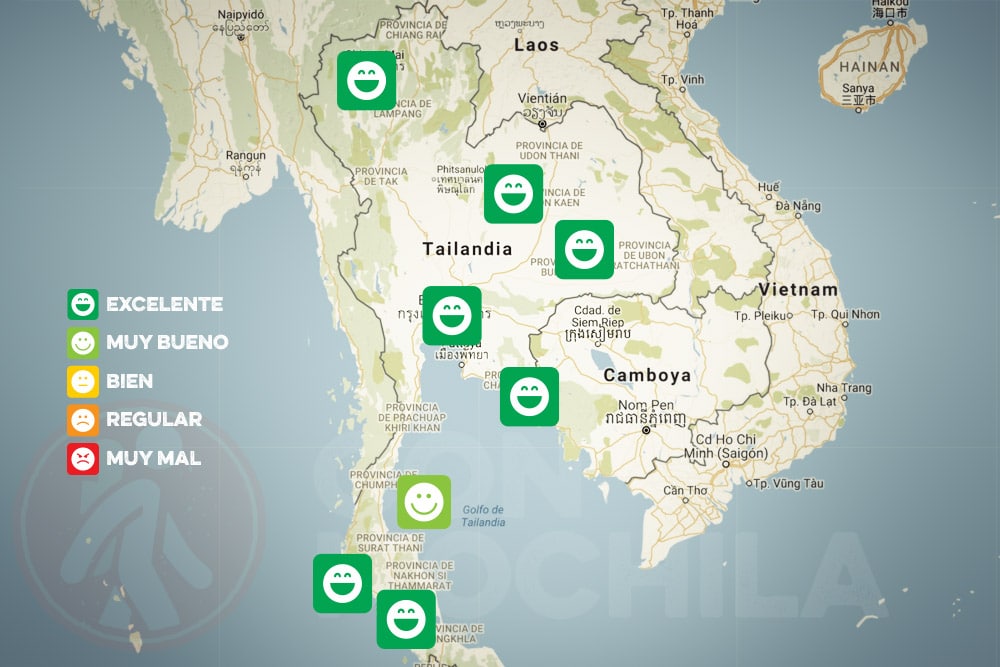
It’s still dry and clear in most beach areas, but temperatures soar, especially in cities.
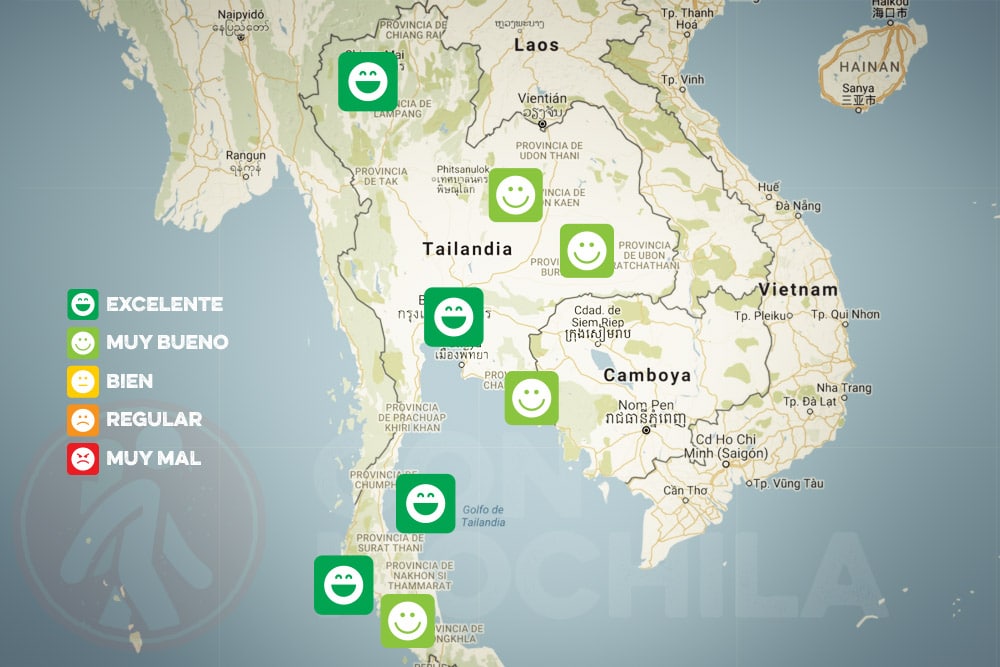
What’s worse is the air pollution caused by agricultural burning. The smoke can be harmful, especially for people with respiratory conditions, so it’s best to avoid northern regions during this time.
In April, the Gulf of Thailand and Bangkok region remain good options, while the west coast and islands near Cambodia start to experience more rain. From May to August, all areas see increasing rainfall and fewer fully sunny days, but the Gulf islands continue to be the best bet.
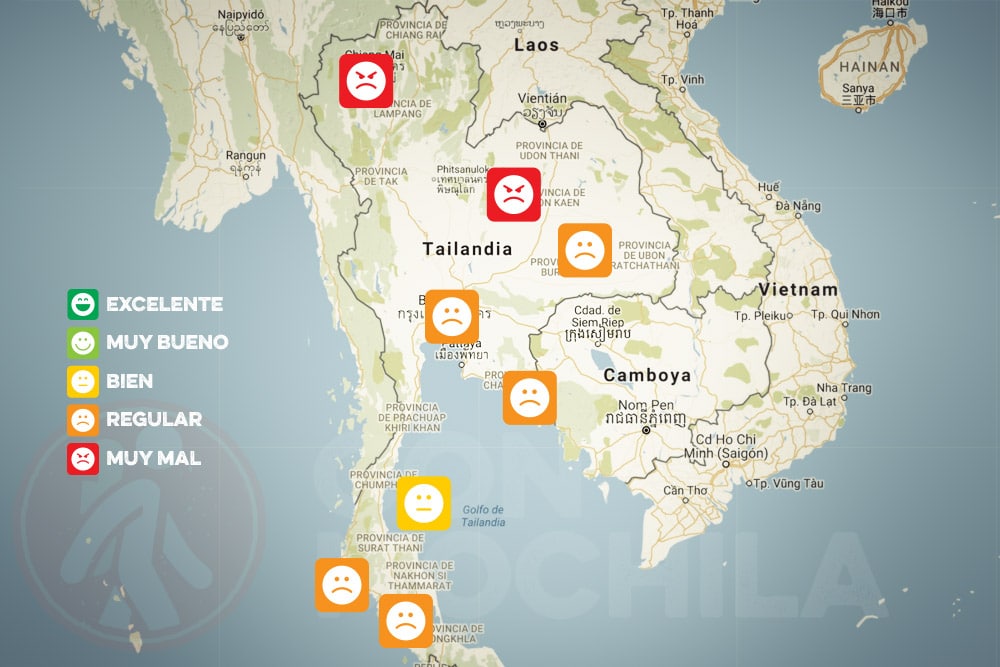
If I were traveling to Thailand between April and August, I’d head to Koh Phangan, Koh Tao, or Koh Samui.
September and October are the worst months to visit Thailand for beach time. That said, Gulf beaches can still be good in September — we’ve visited Koh Tao and Koh Phangan during this time and enjoyed sunny days, even snorkeling and diving with great visibility.
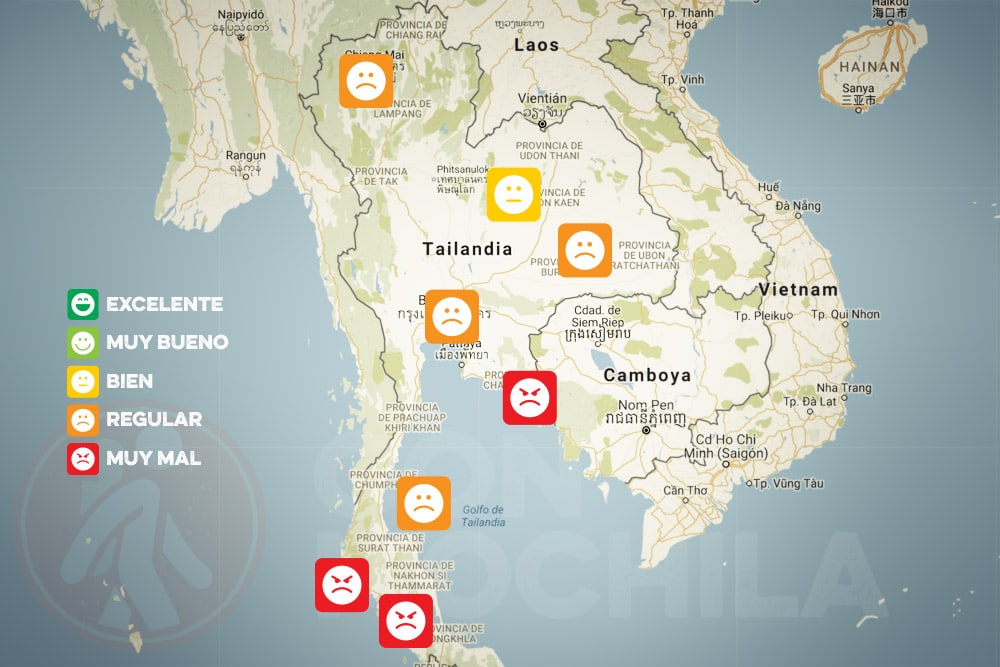
In November, the weather begins to improve across most of the country, but ironically, the Gulf of Thailand (which held out the longest) starts to have its worst weather of the year.
December is another ideal month to visit the Land of Smiles, with good weather across nearly the entire country. Most islands are looking great, though the Gulf of Thailand might still lag slightly behind in terms of conditions.
